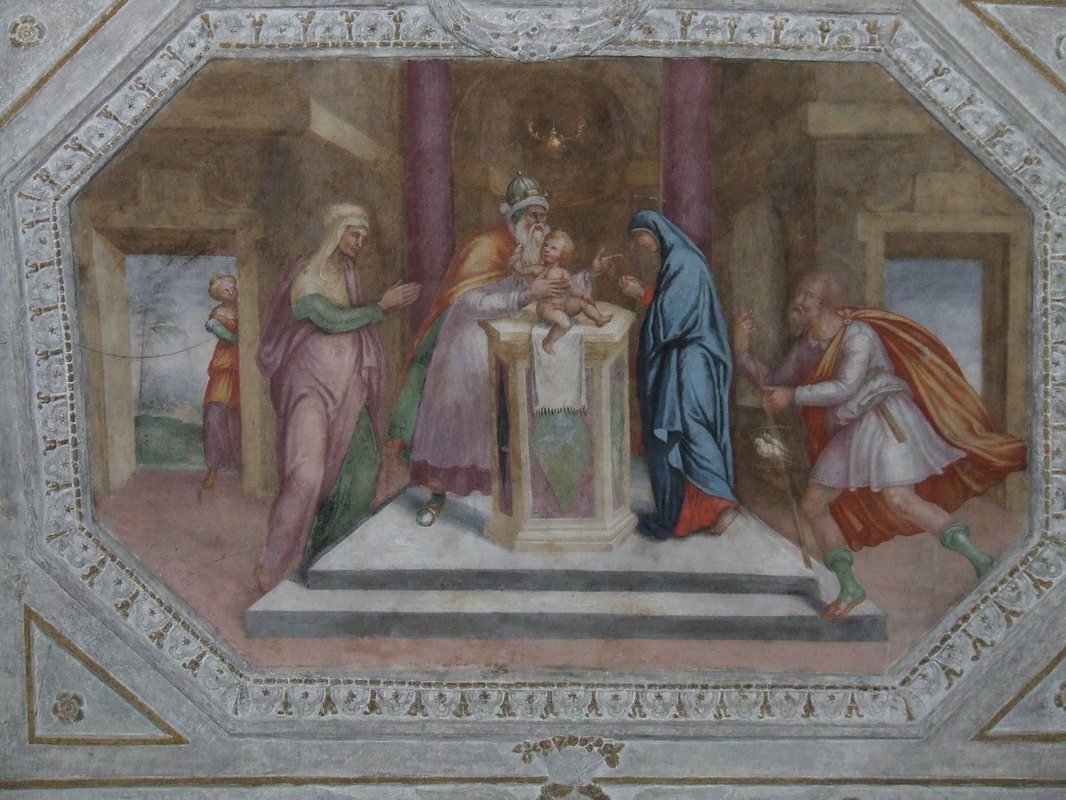The Communion of Mary
Part 1, Chapter 12
The preparations of Mary, Mother of God, for Holy Communion are the same that she brought to the Incarnation. – Solitude and silence.
|
The capacities that the Blessed Virgin brings to the reception of Communion are not from Her; they are from God as their principle. It is God who, with His powerful hand, imprinted them in her body and soul. It has pleased God, however, that Mary cooperate with Him in these preparations by her fidelity and her vigilance for an action so divine.
To highlight such hidden mysteries and to discover, as much as it’s possible for us, the interior dispositions of her heart and soul, let’s look at what the Eucharist is. The Eucharist, say the Fathers of the Church, is a second Incarnation, which places in the chaste bosom of Mary, by Communion, the same Son and the same God whom she had carried in the same bosom through the Incarnation. God, being as holy under the Eucharistic veils as He is in the bosom of Mary, the same dispositions that she brought to the mystery of the Incarnation where Jesus Christ became her Son, she must bring them to the holy table too, where Jesus Christ becomes her food. |
Because it’s not at the instigation of Joachim and Anne that Mary, wholly a child, withdrew into the temple. It’s her future Son who takes care she does it, who draws her into solitude, in order to imprint in her soul His solitary spirit and silence. The same spirit which must contain her Son in her bosom passes into her, and leads her into the temple to live there solitary and silent. Thus it prepares her for the mystery of the Incarnation, through which she must belong completely to Jesus Christ by the solitude which disassociates her from every creature and claims her totally and uniquely for God.
After the Incarnation in which the Word made flesh became her Son, Mary does not see a mystery more excellent and more exalted than that of the Eucharist, where Jesus becomes her food and becomes incarnate a second time in her bosom.
The Eucharist is a Mystery of solitude and silence, where the Son of God becomes solitary and silent for the second time. The Virgin Mary had received from her divine Son this spirit of silence and solitude, having been since the mystery of the Incarnation as solitary as silent. She does come out of her solitude, say our holy books, except to go render a duty of piety to her cousin Elizabeth by visiting her. All the rest of the time, she remained in Nazareth with Jesus her divine Son; she contemplated and adored Him in the silence of solitude, offering Him every kind of praise and blessing. She thus disposed herself in advance for the divine communion by silence and solitude, conforming the dispositions of her soul to the dispositions of her divine Son, who, in the Eucharist, is as solitary as silent.
It is, in fact, an immutable law, that, in order to participate worthily and abundantly in the grace of our sacred Mysteries, it’s necessary to bring to them the dispositions in connection with these mysteries. The Mystery of the Passion and death of Jesus Christ, in order to communicate its grace, requires the spirit of penance. So, the Eucharist, which is a Mystery of solitude and silence, in which Jesus Christ is as solitary as silent, demands solitude and silence of those who approach it.
Why do Christians meditate so little on the fruits of our holy Mysteries? It’s because they don’t bring the necessary dispositions to them. Jesus Christ nailed to the Cross, His head crowned with thorns, and His body covered with wounds, cannot spread the graces which flow from all His wounds on unmortified souls ceaselessly yearning after the sweetness and pleasures of this life.
Jesus Christ, solitary and silent in the Mystery of the Eucharist, cannot communicate the unspeakable gifts which flow from His real presence among us to dissipated souls, full of themselves, plunged from morning to evening in the conversations and the useless and often dangerous discussions of children of the world.
+ + +
Free Bonus Giveaway
And if you want a free ebook specifically on how to live ‘in Mary’ (the one part St. Louis explained the least), and to be notified when new Marian articles and books are published, please click the button below and join our group. You can unsubscribe after you get the free ebook, but I hope you’ll remain part of our Marian group. It’s up to you.
Copyright 2011-2025 Casimir Valla All rights reserved.

